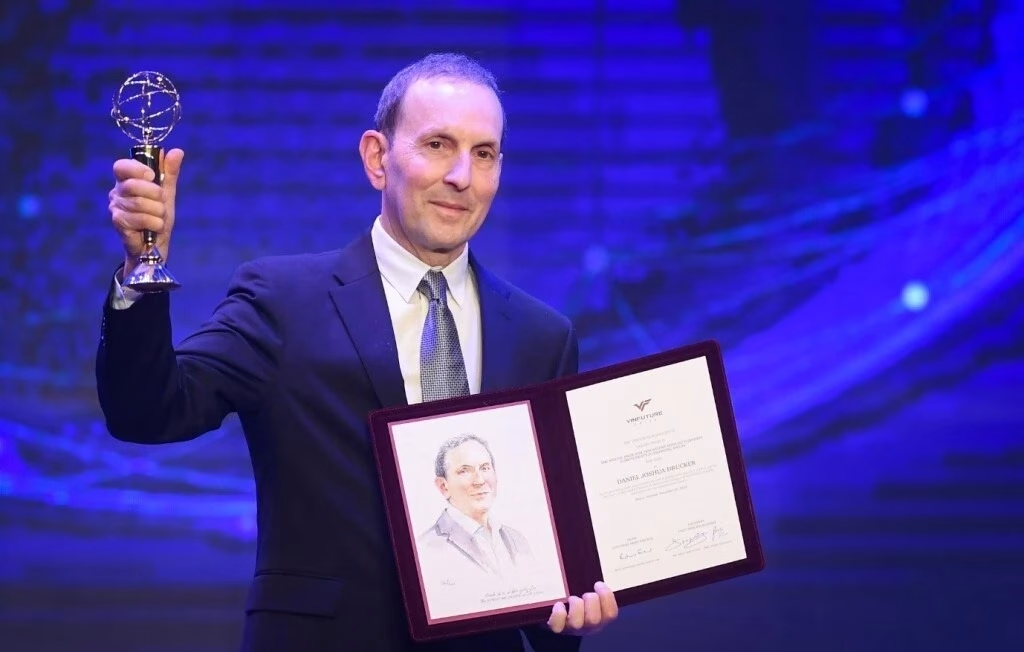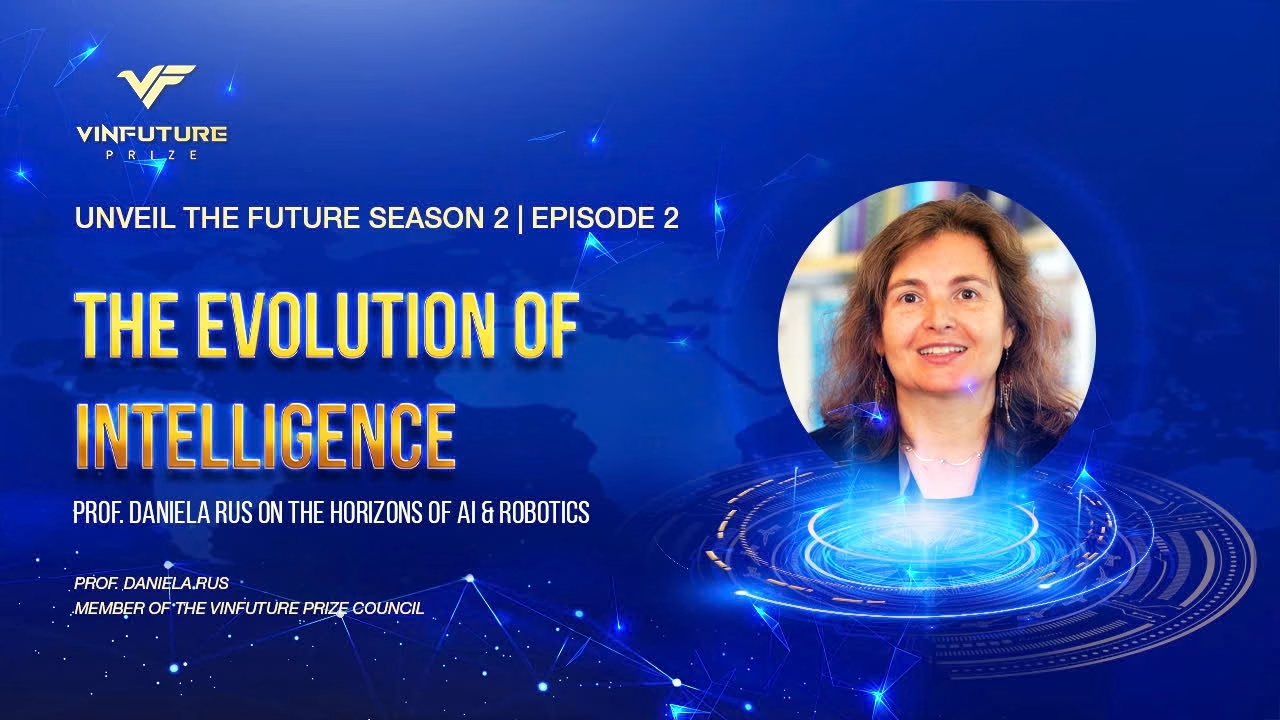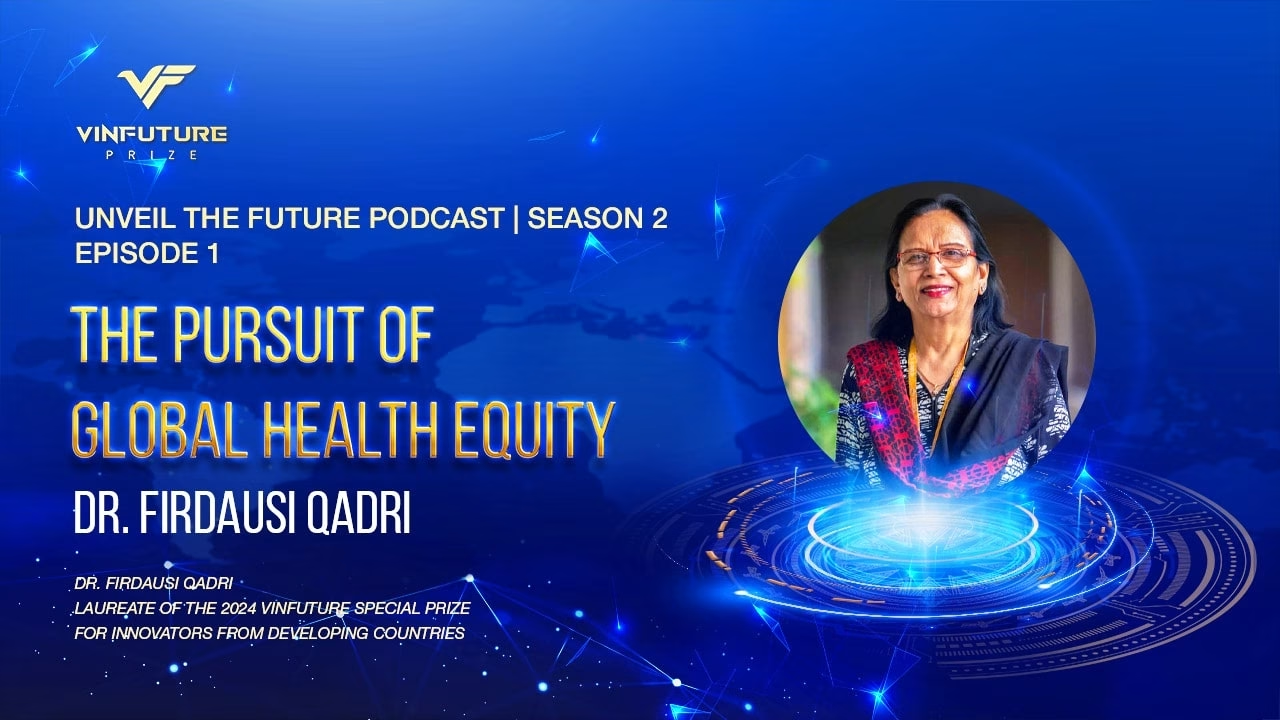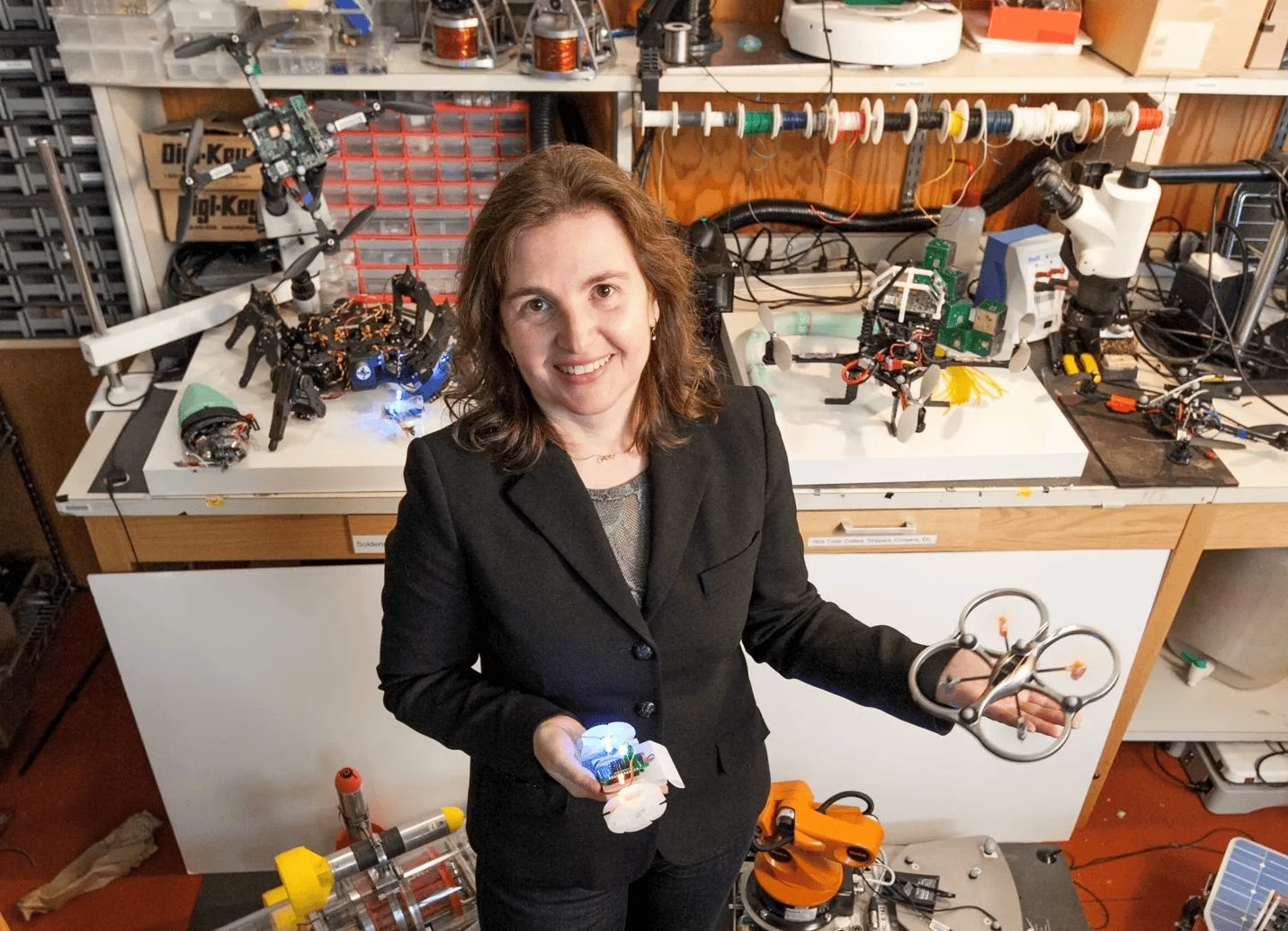Professor Novoselov is best known for his work in isolating graphene at the University of Manchester in 2004, and since then, he has been at the forefront of research on the use of graphene for water filtration. In this interview, we explore his groundbreaking research and its potential for solving one of the world’s most pressing issues: access to clean water.
– How do you envision the potential of using or applying innovative materials in water management?
– Professor Novoselov: Water management has made fantastic progress in the past 30 to 40 years, thanks to material advancements. Several countries, such as Singapore, Israel, and some others have survived and thrived due to the development of membrane technology over the past few decades. Their success is solely attributed to the advancements in advanced materials. However, there is still room for innovation: desalination is still achieving only 30-50% of ultimate efficiency, similar to solar cells.
There is room for innovation in developing new types of solar cells and improving traditional ones. I believe that novel, advanced materials such as graphene can improve efficiency in water desalination as well.
Currently, some commercial companies are testing these materials or hybrid materials like graphene-polymer membranes and I’m sure we will see improvements in efficiency in the next few years. Smart water management is what we need. Our membranes not only perform desalination but also have other functions like monitoring water quality, fixing water quality problems in terms of sorption, killing bacteria, and adsorbing heavy metals.
Developing self-healing properties can increase the longevity of these membranes, but all of this requires significant advancements in materials science.
Professor Novoselov at the event “Conversation with the VinFuture Prize Council and Pre-screening Committee” on December 17, 2022.
– I understand that your team in Singapore is working on developing smart membranes for water treatment. Can you tell me more about your progress and expectations and do you think smart membranes will have a significant global impact, particularly in developing countries?
– Professor Novoselov: Our team is still in the early stages and primarily focused on fundamental research. We are working to determine the definition and programming of smart materials. We have a pipeline of different membranes that can be programmed to perform specific functions based on environmental changes. For example, we can make them to allow certain ions to go through while blocking others or use signaling molecules to trigger the release of specific ions.
We can also design materials to absorb specific chemical species, such as gold or heavy metals, or biological substances. Once we have a better understanding of reprogramming these membranes, we can use them for a wide range of applications.
We also want to focus on more challenging tasks, such as creating membranes for biological applications like artificial tissues, which require careful programming for ion selectivity.
However, given the rapid progress in membrane development and the seriousness of water sustainability issues, I am confident that we will see exciting results in the field of smart membranes in the near future.
– Could you please explain more on the application of graphene in water management?
– Professor Novoselov: Graphene is now widely used in several different applications. I know that the second generation of the graphene thermal management system will be released in the next few days. Graphene has also been used for filtration, CO2 capture, and in battery technology with thousands of tons of this material being utilized these days. Water desalination based on graphene is still in development, but private companies are now developing it, which is usually a good sign.
However, if we’re thinking about sustainability in a broader sense, there are other uses of graphene, such as in membrane technology for fuel cells and proton membranes, which is a big and very important application.
Also, graphene is a form of carbon, and we can utilize it to synthesize useful materials from CO2 by capturing and converting it. Some of these materials can also be used for membrane technology. However, we need to find much bigger applications that will significantly reduce today’s CO2 levels, and we’re working on those applications now.
– You mentioned earlier that some new methods of desalination might be able to extract more and more bacteria and perform other feats. Could you please elaborate?
– Professor Novoselov: That’s on top of the general efficiency of the membrane. Of course, you can imagine that once you have a membrane, if you live in a wet climate, then bacteria start to grow everywhere. We cannot avoid it, so you basically need to make sure that the surface of your membrane has some antibacterial properties, and there are many ways to do that. You can apply some chemical groups on the surface or charge it in such a way that bacteria cannot stick on it.
But it is a big problem for these membranes, and we do know that we can create antibacterial coatings with graphene. The question is, can we really combine them and bring both together? Basically, you need to make sure that those surfaces have antibacterial properties and are suitable for water filtration. You need to find materials that can do both jobs simultaneously, the more jobs they can do simultaneously, the better.
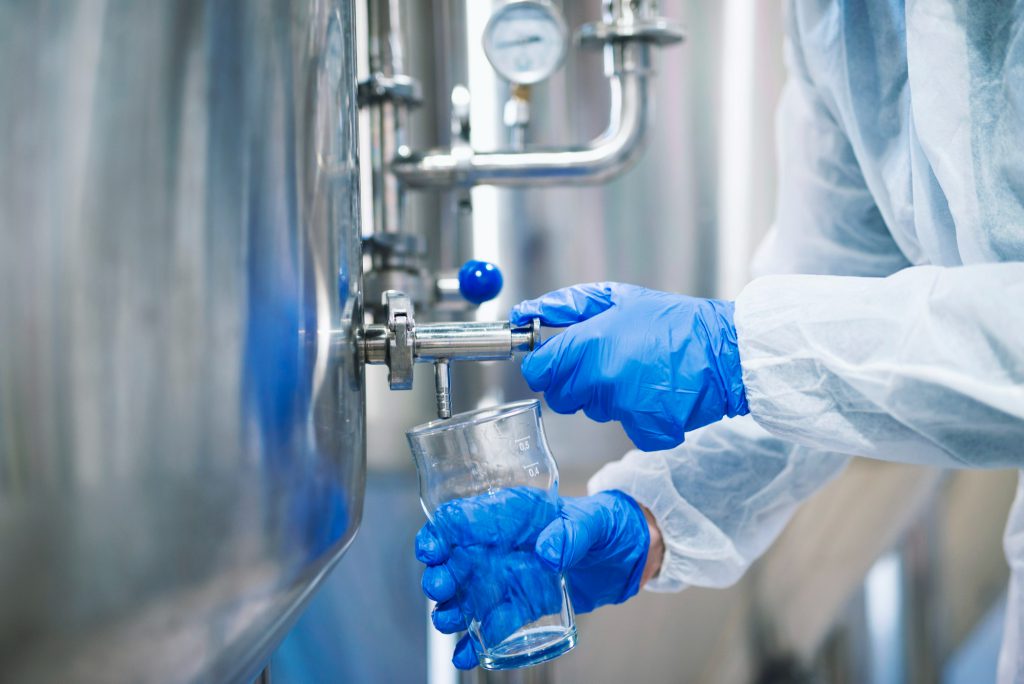
– Could you develop a membrane that was so efficient both in terms of energy and cost that it could be bought into a small African village somewhere and instantly used to improve that water supply?
– Professor Novoselov: I’m sure that we can create multiple modules these days. You can create a small solar farm that can power this plant and supply it with electricity, and since it’s so small, it’s only a question of electric power. These days we’re producing reasonably good solar panels. Israel is supplied by the desalination plant, so it is definitely doable these days.
However, water desalination plants can operate on different principles. Usually, we get energy from the sun, put it through a pump, and create a huge pressure that passes water through, removing the water shell from sodium ions. But there are other ways to desalinate water, such as using direct heat to produce water vapor.
In terms of the bigger scale, current membrane technology definitely dominates, but perhaps there are smarter ways to achieve this, such as converting the energy of the sun directly into heat and using water vapor. These technologies exist, and do work in principle, but they are probably not yet commercially available so it’s a matter of improving productivity and efficiency.
I would say that once we go on the general sustainability scale, it’s all about different types of membranes for CO2 separation or CO2 extraction, CO2, hydrogen separation, and so on.
– So, the more efficient the water membrane is, the less money it costs, ultimately, I suppose. And the more sustainable it is?
– Professor Novoselov: Currently, most of our energy comes from burning coal, gas, and oil. Therefore, if we can improve efficiency by a factor of two, it would result in significant savings for everyone.
While traditional industries consume less energy, a lot of energy is used for digital purposes, which is a separate topic. It is essential to focus on achieving energy efficiency in all areas, including making our computers smarter and more energy efficient.
– Do you think there’s a rough time frame for when we might have commercially viable graphene membranes for desalination?
– Professor Novoselov: I am confident that there are already pilot plants working on this technology. Several companies are currently working on it, but I am not sure if they are producing water yet. Once the technology is out of the university and into these companies, it is a good sign, but it may take five to seven years to see significant progress.
Graphene is not the only material being used, and we cannot expect everything around us to be made of graphene suddenly. There are many other materials, and graphene is gradually becoming a part of our lives. The membranes are designed by combining various materials, not only graphene.
When it comes to smartness, we need to combine graphene with other materials to respond to the external environment. It’s a combination of different materials, not just graphene, that makes this possible.
Cover photo: Image by Freepik


